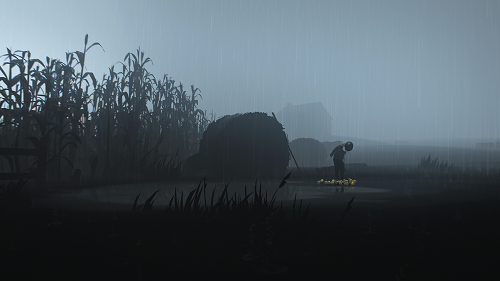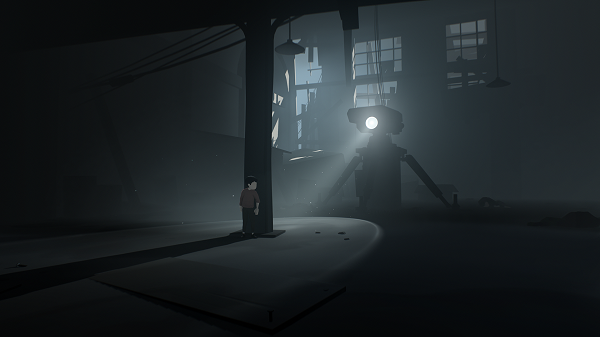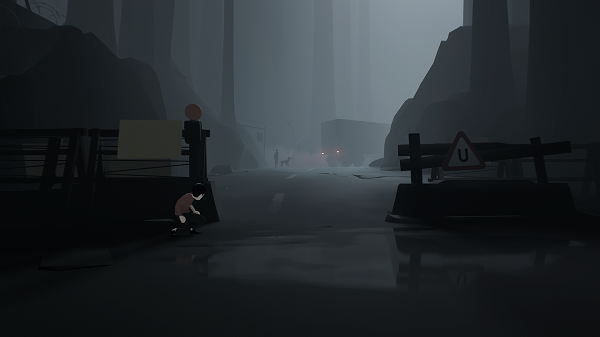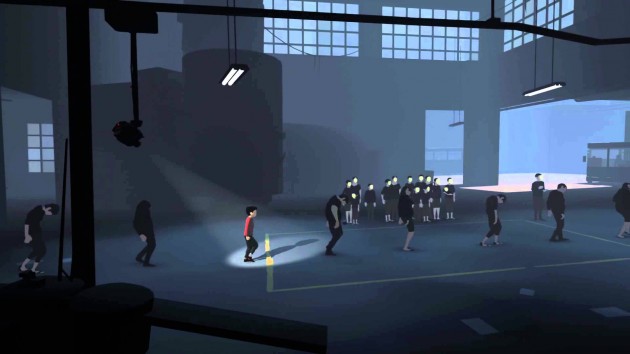
I was a massive fan of Playdead’s previous game Limbo and the style and atmosphere it brought. They created an experience that brought a feeling of loneliness and despair without the aid of voice work or a written story and I adored it. Six years later, Playdead are back with a brand new puzzle-platformer for players everywhere to experience, Inside. Such a long lead time, as well as the critical success of Limbo before it, understandably leaves Inside with a lot of expectations to live up to. Fortunately, Inside more than meets these expectations, easily being one of my favourite games of this generation and one of the finest examples of an emergent narrative that evokes an emotional response.

When trying to tell a story without words, the look and atmosphere of your game is one of, if not the most, important tools you have at your disposal. Playdead proved they had a talent for this with Limbo, but they have perfected it with Inside. Despair and desolation seem to have been the main theme during the development of Inside, along with a splash of the Orwellian. The muted palette ensures that no matter the environment you find yourself in, you’re always aware that this is not a happy place or situation. Backgrounds are used to great effect to further enhance these feelings, with scenes playing out that would fit perfectly in 1984 or even Fables. Lines of people shuffle into trucks while dogs on leashes lunge towards them, scientists poke and prod at people tied to tables and surveillance cameras are everywhere. Combined, these elements lead me to believe that I was attempting to escape a corrupt regime that was hell-bent on controlling the populous. However, with no written story, it’s all ambiguous and you may come to a different conclusion when you play it yourself.
The environments and colour palette help set the scene, but these are only a part of the package to play with your emotions and make sure that you are invested in the outcome of the game. Similarly to Limbo, you play as a young boy with no backstory and no explanation as to what situation you have found yourself in. Quickly, as you hide behind a tree, you find that the other inhabitants of this world are not your friends and they are more than happy to harm you. As you journey through this desolate world, you begin to see that the vulnerable boy isn’t some almighty killing machine, but just a scared and frightened child who is trying to fight to stay alive. His actions and animations as you explore convey this especially well, as he cowers behind cover when other people are nearby or stumbles and gasps as he falls from a height. His little stumbles and gasps as he walks around, as well as his exclamations and gargles as he dies leave you wanting to protect him in a way that other games don’t come close to. Inside evokes a strong emotional response, which is exactly what I want from a game like this.

The tone and the mood are all set, but you also need core gameplay and mechanics that work well in their own right to really complete the experience. As with Limbo before it, Inside keeps the controls extremely simple, with you only having the ability to move, jump and grab. What this means is that any variety in the puzzles needs to come from a source other than the controls themselves. As you can imagine, many of the puzzles have you moving objects to specific places, but this tends to only be a small piece of a puzzle. More often than not, the puzzles also include elements of timing, like timing your runs to avoid detection and death or utilising the environment around you to stop enemies from being able to get to you. There is a huge variety of puzzles in the game, from simple switch flicks, to utilising others trigger switches, and some timing based escape sequences. There is a massive variety in what you do and without spoiling the specifics of the puzzles, the same emotional moments from the rest of the game are tied in as well.
Playdead set out to create the ultimate emergent narrative experience with Inside, and I believe they have succeeded. The world is perfectly set by the muted palette, and the sense of despair seeped into my being as I got further and further into the game. As the more shocking and tense sequences played out during the game, I found myself becoming emotionally invested in the character in a way that I haven’t in a long time. Inside is a compelling and excellently crafted experience, and is one that I cannot recommend enough.
-Desperate and desolate environment is perfectly set
-Boy character is well created for emotional investment
-Large variety in puzzles
-Unsettling and foreboding atmosphere is incredible






